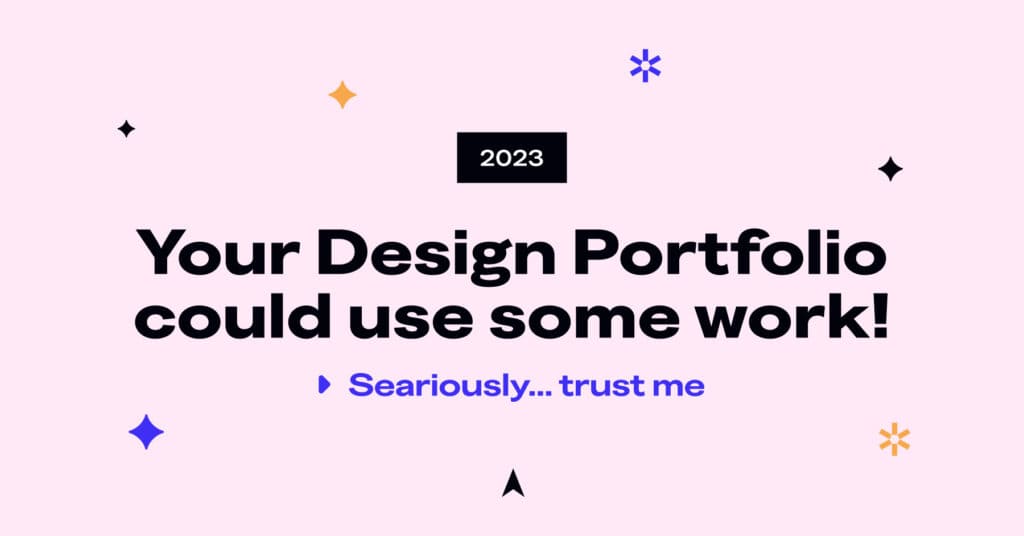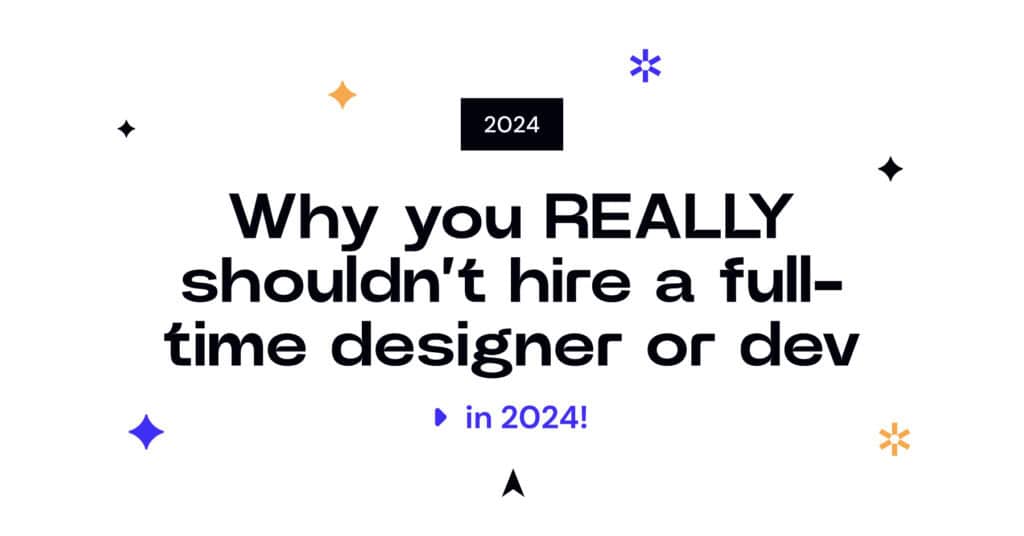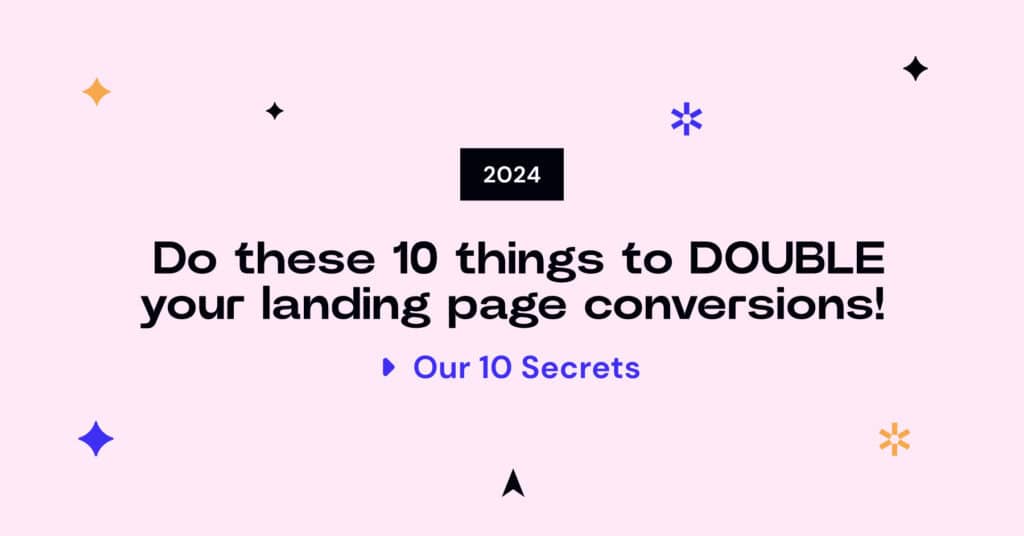Design is an industry that is creative in nature, so why do we all make the same design portfolio? It’s true that while in some cases, following a formula can help you get a job. There are definitely some dos and don’ts to design portfolios. However, this doesn’t mean that every web designer should make the same identical portfolio.
In fact, the industry is starting to actively reject these repetitive and copycat portfolios. To which we say – good! We’re so excited to see the encouragement of fresh ideas and creative expression in portfolios. But how do you execute this? In other words, how can designers develop portfolios that aren’t derivative?
In this article, we will explore the current problem with web design portfolios and discuss some ways in which you can improve your portfolio. Let’s get right into it!
Sit Down and Have a Chat with Yourself
There shouldn’t be a formula for putting together your web design or UI design portfolio. As we mentioned before, the biggest issues with design portfolios are that they are all the same! But are all designers the same? No way, absolutely not. Each individual web designer has a different story, a different level of skill, and different parts of web design that they uniquely love.
Think about who you are, what you love about design, and sketch it all out on a piece of paper. Does your portfolio currently reflect that? Odds are, probably not. You’ve likely developed your portfolio based on “industry standards” or “what hiring managers want to see”.
It’s time to get rid of the old and bring in new beginnings. If you want to stand out and secure design jobs, your portfolio will need to reflect you as a designer. Not the design industry.
Pick a Specialty
Along this same line, picking a specialty in web design is important! Previously, people cautioned against declaring that you were good at one particular thing. Web design and web development are broad reaching industries. Because of this, the industry lends itself to having specialists.
Simply put, design firms want to know that they can rely on their designer who is a champion of UI design. There are four main areas in which you can specialize within website building and further inside these individual specialties.
Deciding what you want to do is more important than showing off your skills at everything. Try and put yourself out there in a way that shows that you can get really good at one thing. If you don’t already know what this is, you should try to improve your current skill set and portfolio to reflect this.
In real world design situations, you will be working with a team in an assigned role. Your portfolio should display your strengths so that your potential company can know for certain where they would use you. Who will you be on a team of designers? You get to decide this before you present yourself through your portfolio.
Show Off Your Purpose
Why do you want to be a designer?
No, seriously. Why do you want to be a designer? This question is sure to be answered within an interview, but it doesn’t have to be. In fact, showing your purpose and your goal within your portfolio is a must-do for the modern design portfolio.
Let your portfolio speak for you! Those that are hiring in the area of design want to know what makes you want to design. Showing off your best work is not the goal of a portfolio. If this surprises you, you may need to read back through this article! Your best work doesn’t matter, and your portfolio is not a representation of “past client work”.
Instead, your portfolio is a representation of your passion for design. In this way, your projects that you share should show how much you want to be a designer through the passion in your creations.
Display Your Individuality
You may have heard the phrase “if you’ve got it, flaunt it”. If you have a personal style or design inspiration that you love to see and you love to create, you should create it for your portfolio. This ties into our last point.
Showing your designs is paramount to successfully establishing yourself as a designer in the industry. Putting a portfolio together of prior assigned client work that doesn’t necessarily reflect your own style puts a damper on your individuality.
There are circumstances in those designs that were likely out of your control, as there is with much client work. Certain clients dislike color, others prefer it, some would rather a modern font choice when something else might work better in your opinion.
How to Redo Your Design Portfolio
To go against the grain, you will likely need to redo your portfolio. Now that we’ve discussed the issue with the current ways that portfolios are being presented, let’s go over the ways in which you can redo your portfolio and what you should keep in mind.
Who is Looking at These Portfolios?
There are three groups of people who may view your portfolio and have different impressions of it. They are:
- Recruiters
- Design Management
- Clients
Each of these groups of people are looking for different things within your portfolio. Recruiters are looking to make sure that you meet the requirements and that your work isn’t shockingly bad. Clients are looking for beautiful designs that they want to imagine for their own projects. And design managers are looking far more critically.
A design manager wants to know the details. They want to see the functionality, your skills, and your individual contribution. If you were creating this project as a part of their team, what would you bring to the table? In your case studies, they should see your thought processes.
Most importantly, they should see your struggles. Do not lie and tell hiring committees that you perfectly executed your design on the first try and you had a perfect time with it and everything was like a movie where you were the main character.
Where Should Your Portfolio Live Online?
The industry standard, UXfolio, is a thing of the past. And seriously, leave it there. We encourage you to make UXfolio a thing of the past. Instead, consider options like PDFs, websites, Notion, Behance or Dribbble for your design portfolio. We think that these options lend more to your individuality and putting your best foot forward because you can make your design portfolio look how you want it to look.
UXfolio, on the other hand, plays right into the issue at hand – everyone’s portfolios look the same. There is no way to use the platform to share your portfolio in a way that goes against the grain.

What Did You Do for Your Projects?
If you are specializing in something or you do have an excellent collaborative client project to show, you should be describing your role.
This is a handy way to tell design managers that you know how to work in a team setting and that you can deliver quality work for your portion of the project. Jiggy Villanueva, product designer for Kalibrr Design and Tayohelp.com, describes this as an easy addition to your case studies:
“It would help if you have a section that describes your role or contribution to a project with clarity and purpose”.
Jiggy Villanueva
At UI Rocket, we completely agree. Defining your role helps to show that you are a team player. It also shows that you are willing to feature work that you are proud of even if other major components were performed by another designer.
What Should You Include in Your New Design Portfolio?
We’re not going to tell you exactly what you should include in your new, original design portfolio. That would defeat the purpose of this entire article! Instead, we can encourage you to stick to our advice, ask yourself these questions, and try to include these three things:
- Stand Out
- Don’t Just Use Client Work
- Be Honest
These three features of your portfolio are sure to provide you with the best chances of standing out as a designer.

Conclusion
We hope that you learned from this article how to ditch design standards and quit following a portfolio formula. We hope that your new and improved design portfolio focuses on putting your passion back into your design portfolio. When you put yourself into your work, those that review it will get a more accurate picture of how you are as a designer.
At UI Rocket, we encourage others to put unique design over industry expectations. You and your portfolio will be all the better for it. If you have any further questions about design and the industry, we would love to help answer them for you!






